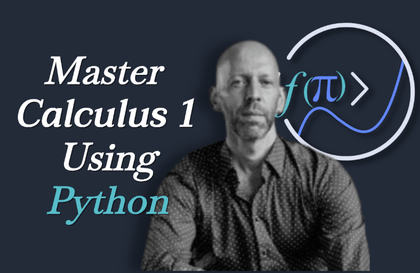
Python을 사용하여 미적분학 1 마스터하기: 도함수와 응용
Mike X Cohen
미적분학에 대한 깊은 이해와 직관을 개발하세요. 문제를 해결하고 손으로 그리고 Python으로 알고리즘을 구현하세요.
입문
Python, Numpy, 미적분
Theory, numerical approximations, intuition, and visualization in integral calculus. Enhance your math-coding skills.
18 learners are taking this course

Understand integral calculus
How to integrate — with techniques like u-substitution, integration by parts, partial fractions
why integration works, from multiple conceptual perspectives: geometric, analytic, and numerical
Python (NumPy and SymPy)
Practice applied integration
Who is this course right for?
Mathematicians who want to implement math in code
Anyone who wants to understand calculus intuitively and through real applications
Coders who want to use Python to learn math
Those looking for a modern, practical approach rather than traditional chalkboard-style lectures
Students who want to review or rebuild their understanding of college-level calculus
Anyone seeking a brain-stimulating hobby
Independent educator, ex-neuroscience professor. I make courses and write self-paced textbooks on applied math, coding (Python and MATLAB), data science, machine-learning, deep learning, and LLM mechanisms.
My motto is "you can learn a lot of math with a bit of coding."
저는 독립 교육자로 일하고 있으며, 이전에는 신경과학 교수로 활동했습니다.
응용수학, 코딩 (Python 및 MATLAB), 데이터 사이언스, 머신러닝, 딥러닝, 그리고 LLM 메커니즘에 관한 강의와 자기주도 학습용 교재를 제작하고 있습니다.
저의 모토는 간단합니다. "코딩을 조금만 할 줄 알면, 수학을 훨씬 쉽고 많이 배울 수 있다."
All
94 lectures ∙ (19hr 2min)
Limited time deal
$12,100.00
82%
$53.90
Check out other courses by the instructor!
Explore other courses in the same field!